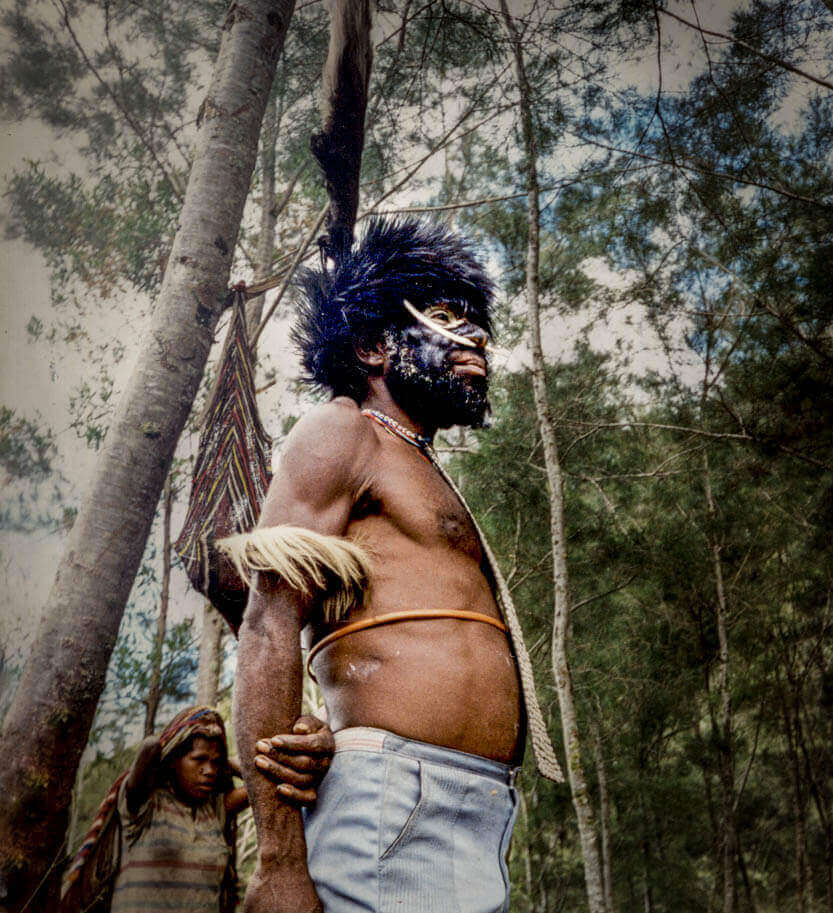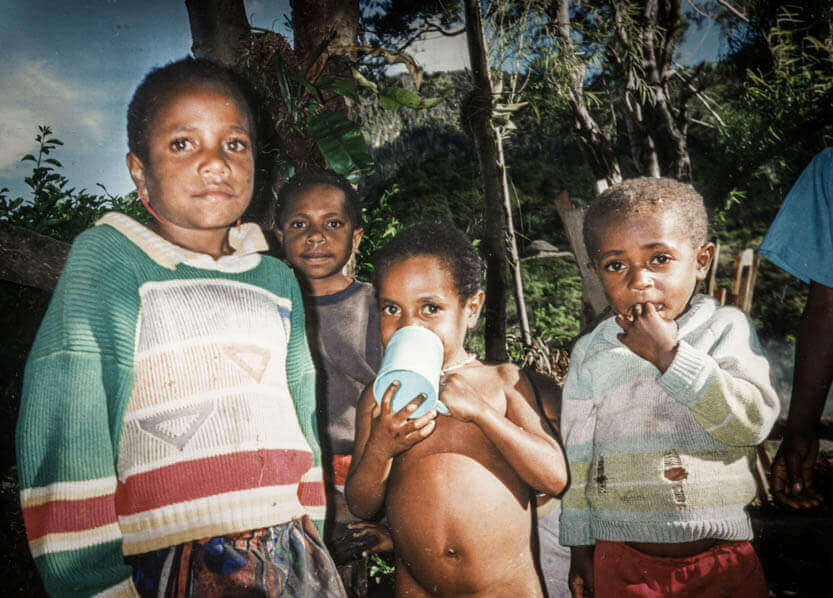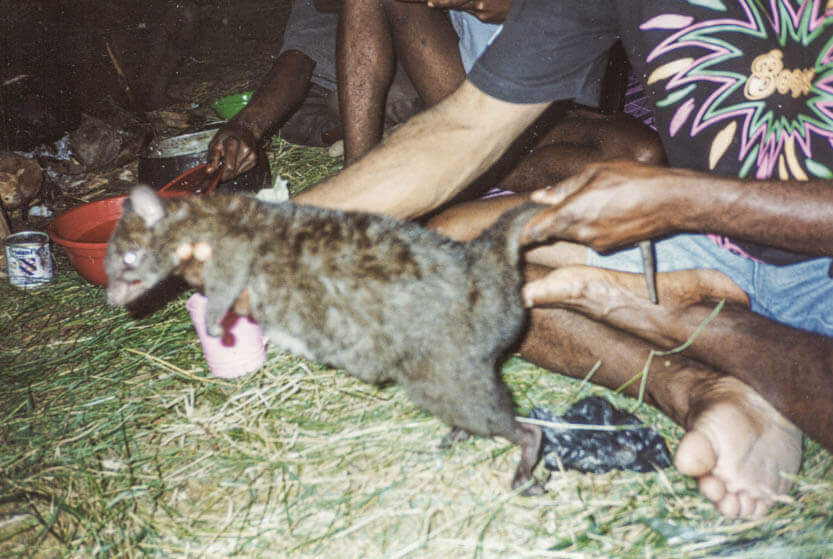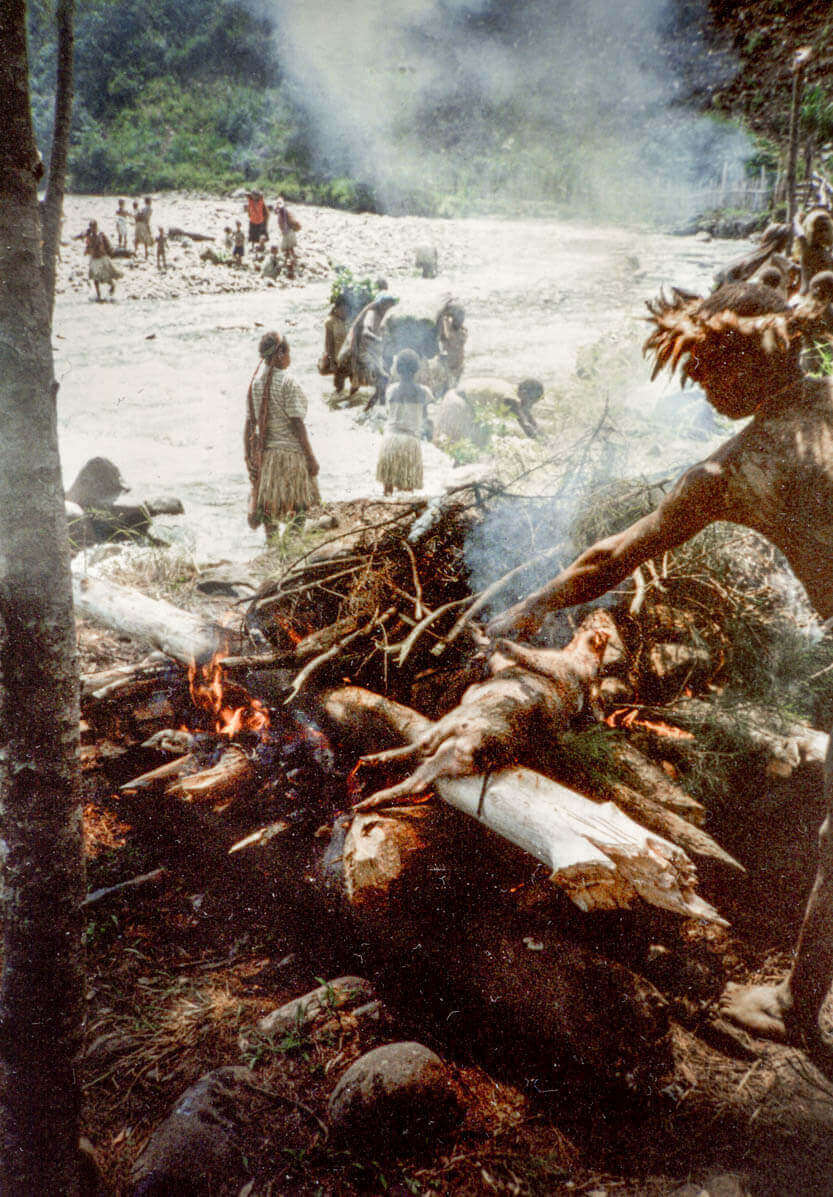New Guinea is the second largest island in the world. The western half belongs to Indonesia and is known as Irian Jaya – and it was here, back in 1994, that my adventure took place.
Until around 1940, 70% of the island remained largely unexplored, and cannibalism was still practiced in some remote areas. In fact, in the early 2000s, reports surfaced that a previously unknown tribe of cannibals had been discovered deep within the jungle.
The Adventure Begins
I had been traveling for about three months when we were on our way to Sentani in Irian Jaya. I was full of anticipation about what this mysterious part of the world would offer us. Unlike the other places I had visited, I hadn’t heard a single word about Irian Jaya from fellow travelers.
My expectations were mixed. One particular thought kept lingering in the back of my mind: “Why has no one been there?” At the same time, I was incredibly excited to visit an island where tourists were practically unheard of.
Paradise on Earth?
After arriving in Sentani, the plan was to fly inland to Wamena and later go on a jungle trek with the two others I was traveling with. The flight took place in a very small plane – but the journey was absolutely breathtaking. We flew between towering mountains, over lakes, rivers, jungle, and endless forests. Had I not known better, I could have sworn it was paradise on Earth.
Almost Like Indiana Jones
When I arrived in Wamena, my first thought was, “Holy crap, this is just like something out of Indiana Jones.” The appearance of the locals was strikingly mixed – some wore regular clothes, while others wore nothing but a penis gourd (a tube made from dried gourd, traditionally worn by men as clothing).
The town of Wamena itself felt almost like a ghost town. There were hardly any people on the streets, and everything just seemed oddly empty. But after finding a place to stay and chatting with a few locals, I began to understand why – it turned out that most of the population actually lived up in the mountains.
Trekking
The next day, we began planning a five-day trek into the jungle. We spoke with a guide we had met the day before, and together we hired a few porters to help carry our food and gear.

We began the trek by driving out to the foot of the mountains, and from there, the real adventure started. Just walking through the mountains was an incredible experience – the landscape was extraordinarily beautiful.
But when we had to cross the first rivers, I started to wonder if this trek had really been such a great idea after all. The bridges, supposedly built by missionaries (who, by the way, first “discovered” Irian Jaya in 1936), looked like they hadn’t been maintained since they were originally constructed.
They were straight out of an Indiana Jones movie – and to be honest, I think even Indiana Jones himself would’ve left a brown stain in his pants after crossing a couple of the bridges we had to face.
Closer to the Locals
Our first overnight stay was at a local teacher’s home. It turned out to be a truly enriching experience, as the teacher’s eldest child was eager to learn English, which gave us a unique glimpse into their daily life and brought us closer to the family.

We noticed that the children didn’t really have any toys. So, when we started making paper airplanes, it sparked great excitement among them. After practicing a bit, they were soon able to make their own paper planes, and their joy was contagious.
Rats
When we finally reached the tribe where we would be staying, we had to sleep in one of the locals’ huts. The altitude was about 2000 meters, so it was quite chilly. But that wasn’t our only challenge when it came to getting a good night’s sleep. We also had another issue – rats.
We had brought along some food, which our porters had carried, and it was stored in the same hut where we were going to sleep. And where there’s food, there are rats! One night, as I was lying next to our food, I woke up to a rat crawling over my shoulder and head. Not exactly the kind of pets you want crawling on you at night, so needless to say, I didn’t get much sleep that night!

Pig Feast
Our guide had arranged a ceremony for us with the tribe we were staying with. The ceremony began with a tribal war (of course, it was a staged performance), where two tribes “fought” each other without actually landing any blows.
After the mock battle, the real celebration began – a pig feast. The feast started with the pig being caught, then two men held it between them before shooting it with an arrow. That was just the beginning of a grand meal, where most of the ceremony participants were painted and dressed in their traditional attire. The food, of course, consisted of the pig that had just been shot, accompanied by sweet potatoes. They actually eat sweet potatoes at every meal, even during a celebration!

What Was the Best Part of the Journey?
If you had asked me what I thought would happen on this trip, I doubt I would have said anything about crossing wild rivers, celebrating with the locals, and even sharing a feast with former cannibals.
The following day, we made our way back toward civilization, and I began to think about taking a proper shower and putting on some clean clothes.
Are the Indiana Jones adventures still out there?
I’d say they were in 1994. It was a huge adventure and so different from anything I had experienced before – and really, anything I’ve experienced since. I do believe it’s still possible to find Indiana Jones-style adventures, but there are definitely fewer of them today than there were back then.
And I can understand how the pursuit of adventure can sometimes end up “ruining” cultures and areas in favor of mass tourism. For example, today you can book a trip through a travel agency to experience an adventure in the very same region I visited in 1994 – perhaps not the exact same tribe, but the same area. Even back in 1994, there were hints that this might happen, especially with the staged tribal war we witnessed – but it was still very much in its early stages then, and I’m sure it has changed quite a bit since. Whether it’s Irian Jaya, the jungles of Borneo, or a Pacific island, the trend is clear: once something adventurous is discovered, others will want to experience it too, which can ultimately destroy an area in the name of tourism.
Facts
Irian Jaya is the Indonesian part of the island of New Guinea, which is the second largest island in the world. The island’s highest peak, Puncak Jaya, reaches 5,030 meters. The island’s wildlife is heavily influenced by Australian fauna, with only a few mammals. Notable inhabitants include dwarf kangaroos, cassowaries, and birds of paradise.
Memory Lane
Based on experiences from 1994, this article takes you through Irian Jaya’s wild rivers, tribal feasts, and untamed landscapes, offering a rare glimpse into a timeless culture.



